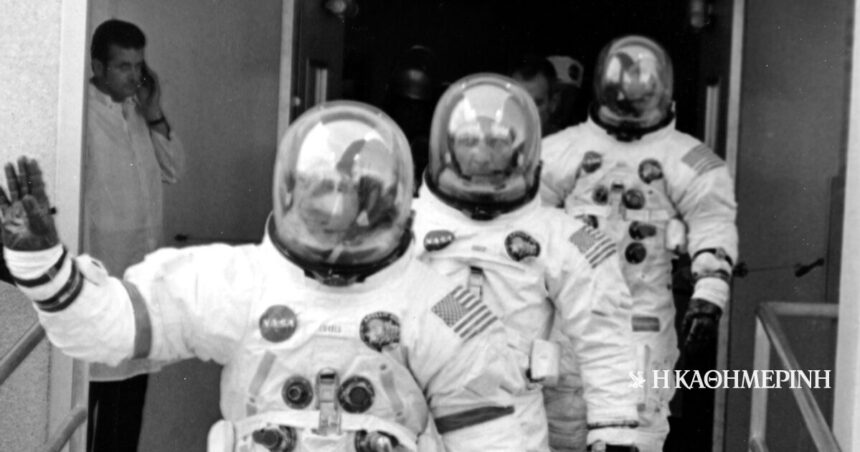In the 1960s Americans focused on the development of ‘Apollo program», The ultimate goal of which was to be manned exploration of Moon. The Apollo program was largely based on the know -how and experience that had gained its executives Nasaof the US Aeronautics and Space Administration, from the two previously manned programs “Mercury” and “Gemini”.
In December 1968, “Apollo 8” was launched. His crew consisted of Frank Borman, James Lobel and William Anders. It was the first manned mission, which was orbited around the Moon. Seven months later, in July 1969, “Apollo 11” was launched with them Neil Armstrong, Michael Collins and Baz Oldrrin. On July 20th, the Eagle Selinakato was affected and on July 21, Armstrong became the first man to step on the surface of the Moon. About 20 minutes later, Eldrin followed. For two hours, Armstrong and Oldrrin were outside the Selinakatos, collecting lunar material, which would be studied by the NASA scientific teams when they returned. Shipment was completed on July 24 after 8 days and 3 hours in space. In November 1969, the launch of “Apollo 12” followed, which was also crowned with success.
The Tuesday’s crew in a row, named “Apollo 13”, included James Lobel, Jack Swigkert and Fred Hays.
NASA’s third mission with the aim of pre -empty and gathering valuable lunar material for study was set for April 1970. It was the mission called “Apollo 13”, with a crew James Lobel, Jack Swaguen and Fred Hays. The launch of the rocket was held on April 11th by the Kennedy Space Center in Florida USA. The governor of the mission James Lobel was a highly experienced pilot of the US Navy, who had participated in three other space missions (Gemini 7, Gemini 12 and Apollo 8). Although they did not have Lobel’s experience on space flights, the other two members of Apollo 13 crew 13 were those pilots of the US Armed Forces and aeronautics engineers.
About 56 hours after Apollo 13 launches, an explosion in the oxygen tank caused Serious damage to electric systems of the spaceship, dramatically reducing the oxygen and energy reserves of the boat. Swubert immediately mentioned the problem at the Houston Control Center, saying the historical phrase “Houston, we have a problem” The target of the affectedness was abandoned. The primary goal has now become the safe return of the crew to Earth.
NASA engineers worked continuously to find solutions for the survival of astronauts.
Astronauts moved to the moonworm ‘Aquarius’, which they used as emergency refuge. NASA engineers in Houston worked incessantly to find solutions for the survival of astronauts, inventing various mechanisms with materials inside the boat. Facing many difficulties, Apollo 13 finally managed to safely be said in the Pacific Ocean on April 17, 1970. Subsequent analyzes of the causes of the lesion showed that The explosion was caused by a defect in the design of the oxygen tank.

Despite the failure to fulfill the objective of the pre -empties, the mission of Apollo 13 was considered successful in terms of crisis management and the implementation of scientific and mechanical solutions under extreme conditions. The mission was an excellent example of the inventiveness and coldness of NASA astronauts and engineers. The story of Apollo 13 remains One of the most impressive examples of survival and cooperation in the history of space explorationconfirming the importance of human intelligence and technological innovation in the journey to space.
https://www.youtube.com/watch?v=mdvoa-sjs0a
The adventure of the three Apollo 13 crews of Apollo 13 was transferred to the big screen in 1995, starring Tom Hanks, Bill Paxton, Kevin Bacon, Gary Siniz and Ed Harris.
Column: Myrto Katsigera, Vassilis Minakakis, Antigoni-Despina Poumenidou, Athanasios Syroplakis






